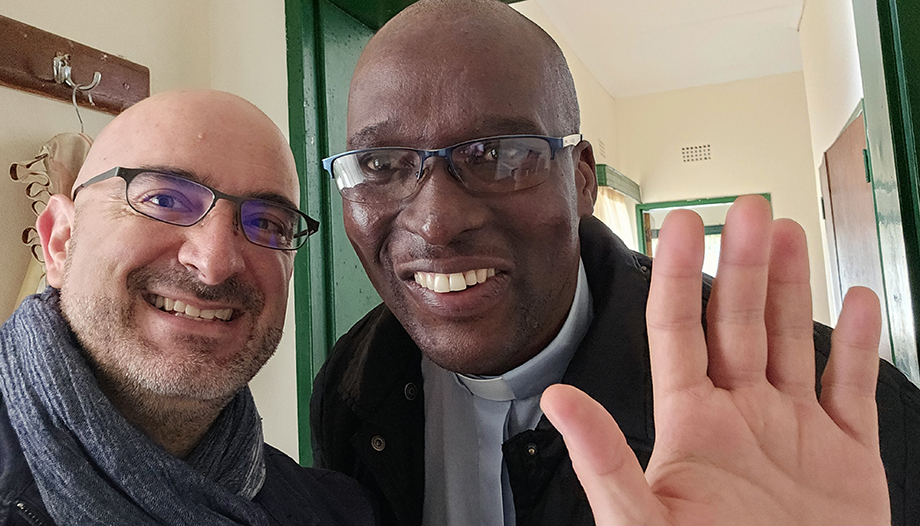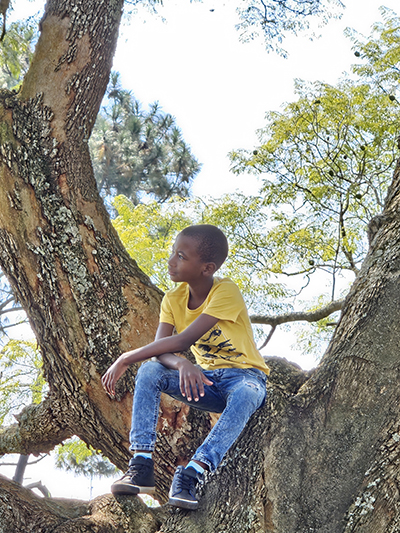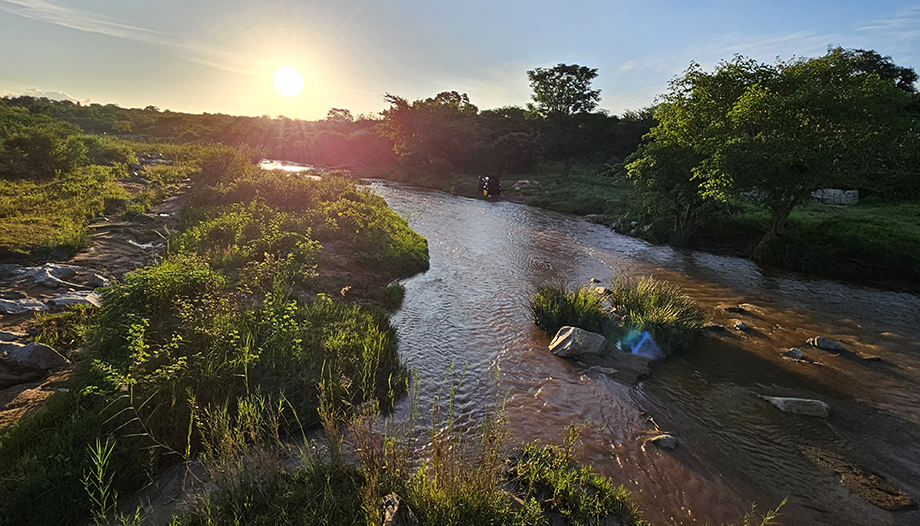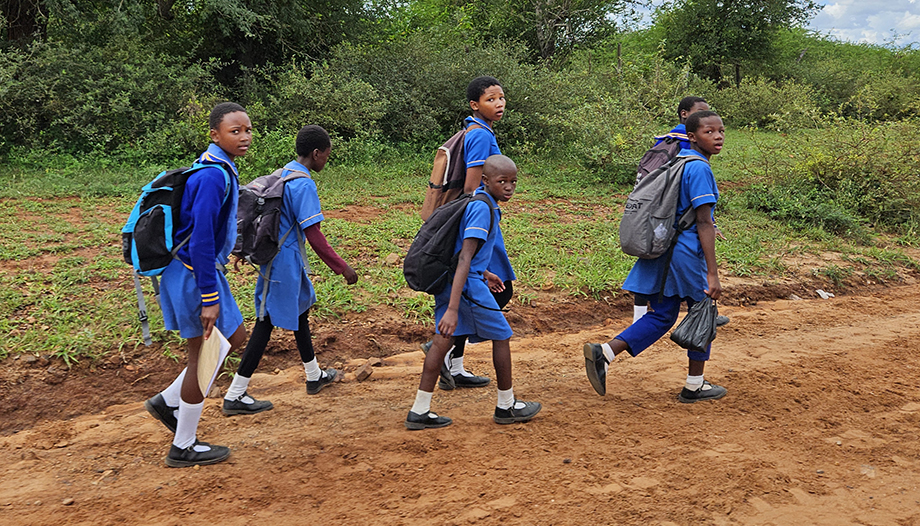This time I am going to write an article a bit different from the usual. Why? First of all, because it is a country that I did not know, before visiting it a few days ago... In fact, it is a country that few people know, because it is very small and remote compared to the traditional tourist routes.
Secondly, because it is a place in the far south of sub-Saharan Africa, light years away from the lands of the Middle East and the Mediterranean to whose history I have devoted so many years. Therefore, it will be a trip we will make together to go - hear, hear! - to Swaziland (now officially eSwatini)!

Let's go.
Why are we going to Swaziland? To shoot a short documentary about an alumnus of the Pontifical University of the Holy Cross whose studies in Social and Institutional Communication were financed by CARF Foundation. So, the first stop was Madrid, where I met up with two Spanish friends and colleagues.
At the airport, we boarded an Ethiopian Airlines flight (the main air transport company in Africa is from Ethiopia itself), so we made a stopover in Addis Ababa to continue to Maputo (Mozambique), where we rented a car to drive the nearly 80 km that separate the Mozambican capital from the border with eSwatini.
In Maputo, a city that is part of the Portuguese colony of Mozambique, we have the opportunity to breathe a seemingly Portuguese air (some excellent cream cakes on sale at the airport, which comfort us after a good 30-hour trip, and the croissant The most expensive in history, a good 18 dollars, taken in Addis Ababa) and to speak a little Portuguese.

But driving out and leaving the airport area suddenly plunges us into a completely different atmosphere: the greenery, the streets crowded with men, women, children, black students (and us, the only three Europeans in a brand new red car! ) who rush into the streets, chase each other, shout, live much more intensely than in Europe, it scares us and excites us at the same time (we also have to be careful with the potholes on the roads, partly unpaved), especially when we pass through Beira, where we have to slow down because it is dusk and dozens of students leave their schools (here they go all day to school) and walk for miles and miles on foot, to get home. And our red car with three bald white guys inside, in a rural area of Mozambique, is not something you see every day in these parts!
We arrive at the border in the afternoon... It is cold (Swaziland is a mountainous country and in April we are already in late autumn) and, once the customs formalities are completed, we manage to cross and finally meet Ncamiso Vilakato, a former student of the University of the Holy Cross in Rome, who will welcome us and act as our guide for the next few days, to show us the service he provides to the local Church and the role of the Church in the country.
During the remaining two hours of travel, most of it on a comfortable deserted highway that the king of eSwatini wanted to have built in his country after having seen those of South Africa, the marked difference between Swaziland and Mozambique becomes apparent: different colonizing powers have brought to the small country we have just entered different languages (Portuguese in Mozambique, English in eSwatini), different customs and a totally Anglo-Saxon sense of order.
I had left Rome on Sunday April 14 at 10.30 am... I finally arrived in Hlatikulu, in southern Swaziland and 40 km from the border with South Africa, at 9 pm on Monday April 15, after 12,000 km and about 35 hours! And Hlatikulu, a village of 2,000 souls at the highest point of the country (over 1,200 meters above sea level) shows us a side of Africa that we did not expect (apart from the impala that crossed the road just before): cold, fog, rain.
Swaziland or eSwatini?
The country once known as Swaziland was renamed by royal decree eSwatini in 2018. In fact, both terms are used and have the same meaning: land of the swatisthe predominant ethnic group in the state.
It is located in sub-Saharan Africa, has an area of just 17,363 km² and a population of just over one million inhabitants, of which about 80% are of ethnic origin. swatis (making it one of the few countries in Africa characterized by a large ethnic majority with insignificant minorities), plus a 12% of Zulus and Sotho (another Bantu lineage) and a small percentage of white Anglo-Saxons or Boers, Middle Easterners and Indians.
I must admit that, although I know many people of African descent, focused as I am on the Middle East, I had never been interested in non-Semitic languages and was surprised to learn that the Bantu languages (including Bantu) are not of African descent. swatiThe Bantu, the language of Swaziland, Zulu and Swahili) represent the largest linguistic grouping, or linguistic family, in Africa: up to 300 languages with a common origin (the Bantu people, originally settled between Cameroon and Nigeria, which then spread across central and southern Africa through migrations that lasted thousands of years). Think of these languages (which are part of the great Nigerian-Kordofanian linguistic family, whose most widespread language, a true lingua franca throughout East Africa, is Swahili, with almost 72 million speakers: Hakuna matata!) are spoken throughout Central and Southern Africa and are often mutually intelligible (Xosa or Zulu speakers, for example, can understand Swati or Sotho speakers and vice versa).
Thus, I learned that, for example, the missal in which mass is celebrated in eSwatini is in another language (Zulu) which, however, is easily understood by the local population, who speak Swati, a closely related language.

A bit of history
eSwatini has a rich and complex history that has its roots in the pre-colonial past of sub-Saharan Africa, dating back to the migrations of Bantu peoples from Nigeria and Cameroon, who arrived in the area around the year 1000, expelling the indigenous Bushmen population.
The Swazi, today the predominant ethnic group in the country, emerged in the 18th century with the formation of the kingdom led by King Ngwane III. The Swazi kingdom developed by alternating marriage alliances and wars against other ethnic groups, in particular the Zulus (spread mainly in the north of present-day South Africa).
However, in the 19th century, the Swazis faced pressure from European settlement in the region. In 1902, the country became a British protectorate following the Second Boer War (1899-1902) between the British Empire and the two independent Boer republics, the Transvaal Republic and the Orange Free State (the Boers were descended from Dutch settlers). During this period, the British introduced the system of indirect administration, granting a semblance of autonomy to the Swazi monarchy.
In 1968, under the reign of Sobhuza II, eSwatini became independent from the United Kingdom and was able to develop significantly through mining and agriculture.
After the death of Sobhuza II in 1982, power passed to his son Mswati III, the current monarch of the country. His rule has been characterized by criticism for the lack of democracy and the violation of human rights. Mswati, in particular, promulgated in 2006 a new Constitution that introduced absolute monarchy, limited, or rather, annulled the powers of Parliament and dissolved political parties (now reduced only to representative associations).
The drama of AIDS
Since the 1980s, Swaziland has faced significant challenges, including widespread poverty, HIV/AIDS, economic inequality and resource scarcity.
AIDS, in particular, has claimed thousands of victims, to the point that in 2017, 28.8% of the population aged 15-49 was infected with the virus, according to the United Nations Programme on AIDS and HIV.
In 2016 alone, there were 9,443 new cases and more than 3,000 deaths as a result of HIV.
The former Swaziland is the state in the world with the highest incidence of HIV among its population. The epidemic is generalized: that is, it affects the entire population, although some groups (prostitutes, adolescents, young women and homosexuals) more than others.
The magnitude of the phenomenon can be traced back to ancestral traditions that allow polygamy and consider procreation a sign of prosperity (King Mswati himself has 11 wives, 35 children and 3 grandchildren), as well as to the scarce culture of prevention and the inertia of institutions for decades in creating a serious prevention program. Due to poverty, therefore, many young girls resort to prostitution, favoring the spread of the virus.
It was not until 2004 when the implementation of Antiretroviral Therapies (ART) began, which has been very successful, to the point that since 2011 the incidence among adults has been reduced by half, as has the number of HIV-positive births, thanks to the mandatory treatment of pregnant and breastfeeding women (it is estimated that today 90% of HIV-positive people have been diagnosed and receive antiretroviral treatment).
There are many NGOs involved in the fight against the disease, and the Catholic Church is at the forefront, with its specialized centers, including that of the Missionary Sisters of the Sacred Heart of Jesus at Mission San Felipe (which we were able to visit), which offers programs not only for prevention and treatment of AIDS/HIV (especially for pregnant women, where antiretroviral treatment blocks transmission of the virus to the fetus, which can be born healthy), but also for fighting poverty and lack of education, gender violence and other diseases, where antiretroviral treatment blocks the transmission of the virus to the fetus, which can be born healthy), but also in the fight against poverty and lack of education, gender violence and other devastating diseases such as tuberculosis and cervical cancer.
Swaziland has been so devastated by AIDS and its consequences on the population that King Mswati III introduced a law in 2001 requiring chastity (female, of course!) until the age of 24.
The dramatic consequences of the epidemic include not only the very high mortality rate among the adult population (but not only) and the drastic decrease in life expectancy, but also the very high number of orphans (there are no official figures, but it is estimated that some 100,000 children live in groups in conditions defined as childhood without adults), for whom in recent years so-called Neighborhood Care Points (VCPs) have been created, communities in which people organize themselves to care for orphans and children in vulnerable conditions.





 Culture, religions and life in eSwatini (Swaziland)
Culture, religions and life in eSwatini (Swaziland)





